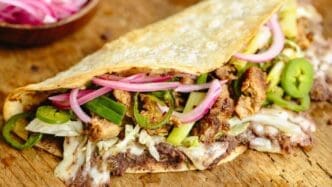In Maui, efforts are ongoing to manage an overpopulation of axis deer that threaten the island’s ecological balance. The presence of approximately 70,000 deer on the island poses a potential environmental crisis, necessitating strategic interventions.
The island of Maui faces a unique challenge with the axis deer, whose population is projected to rise significantly if unchecked. These deer, introduced in the late 1960s and early ’70s, have grown considerably in numbers, bringing them close to a tipping point that could devastate local ecosystems.
Efforts spearheaded by organizations such as the community-led team on the island aim to control the deer population while supporting local food systems. By harvesting these animals, they not only prevent ecological damage but also contribute to food security for the community. Over nine years, roughly 40,000 deer have been harvested and transformed into food, sparing the island from potential ecological chaos.
The entire process has been meticulously planned and executed. Nighttime operations deploy advanced technology, such as drones with thermal vision and specialized night-vision equipment, to efficiently locate and harvest deer. This approach, likened to a high-level sharp shooting special operation, emphasizes safety and efficiency.
Team members, equipped with high-tech gear, venture into the night, using ATVs to move quietly across the terrain. The focus is not on the hunt but on the humane harvesting of the deer to provide nutritional resources while maintaining respect for the animals. This method focuses on yielding food for the community without glorifying the act of hunting itself.
Post-harvest, the deer are quickly processed in state-of-the-art mobile units, ensuring that the meat is prepared and packaged promptly. These units, designed to operate anywhere on the island, play a crucial role in maintaining the meat’s quality and ensuring it reaches those in need efficiently.
The nutritional benefits of the harvested venison are significant. Wild axis deer meat offers a rich amino acid profile and leanness that surpasses typical farm-raised options. This high-quality protein source is distributed through community programs, offering free access to residents affected by recent adversities, such as the fires in Hawaii.
Remarkably, the operation goes beyond just managing wildlife. It builds a strong sense of community involvement and responsibility. Participants in this program gain firsthand experience with the realities of sustainable living and food sourcing, deepening their understanding of ecological stewardship.
The effort to manage the axis deer population in Maui is a testament to the community’s commitment to ecological preservation and food security. By turning a potential environmental threat into a valuable resource, these initiatives highlight the power of communal action and responsible wildlife management.








